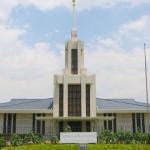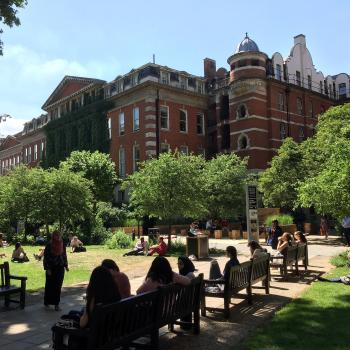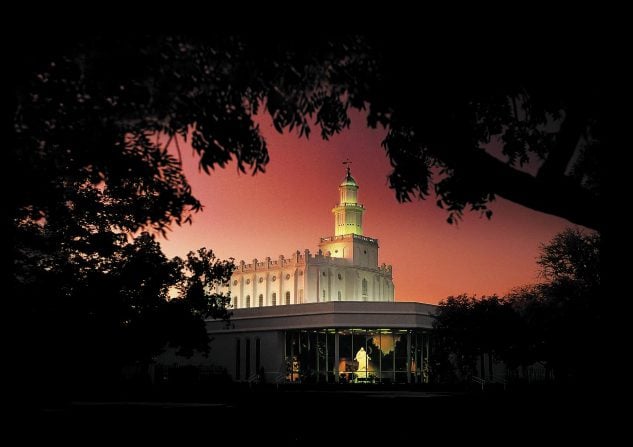
Two non-new articles have newly appeared on the website of the Interpreter Foundation. I hope that you will enjoy them:
Conference Talks: Adam, Eve, the Book of Moses, and the Temple: The Story of Receiving Christ’s Atonement, was delivered at the Interpreter Foundation’s 2020 “Tracing Ancient Threads in the Book of Moses Conference” by Elder Bruce C. Hafen (emeritus) and Sister Marie K. Hafen.
Elder Bruce C. Hafen, an emeritus member of the Seventy and a former president of the St. George Utah Temple, and Sister Marie K. Hafen gave the keynote address, “Adam, Eve, the Book of Moses, and the Temple: The Story of Receiving Christ’s Atonement” at the “Tracing Ancient Threads in the Book of Moses Conference” on Friday, 18 September 2020.
All of the conference presentations were filmed, and both video and audio recordings of each presentation are available. Videos, audio recordings and transcripts are available at https://interpreterfoundation.org/conferences/2020-book-of-moses-conference/papers/. The videos are also available on the Interpreter Foundation YouTube channel at https://www.youtube.com/c/theinterpreterfoundation. A YouTube playlist is also available at https://www.youtube.com/playlist?list=PLRMn4gyXMWLv7A618LA-cCvxMqWRk8kxI.
Hugh Nibley Observed: “Foreword: A Doorkeeper in the House of the Lord,” written by John W. Welch
John Welch says in his foreword to Hugh Nibley Observed, “He is sincerely comfortable thinking of himself as a doorkeeper in the house of the Lord. . . . In a word, Hugh Nibley is no ordinary doorman. But then, as far as that goes, he doesn’t stand by ordinary doorways either.”
Part of our book chapter reprint series, this article originally appeared in Hugh Nibley Observed, edited by Jeffrey M. Bradshaw, Shirley S. Ricks, and Stephen T. Whitlock. For more information, go to https://interpreterfoundation.org/books/hugh-nibley-observed/.
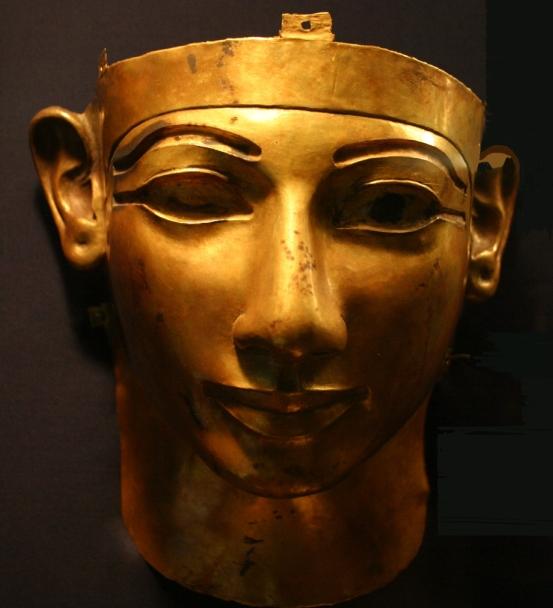
We used our last (almost-full) day here in Sydney to go to the Australian Museum, where we spent our time at a surprisingly large and very, very good traveling exhibit called “Ramses & The Gold of the Pharaohs.”
We also entered into a virtual-reality experience in the Museum in which the spirit of Queen Nefertari, the first Great Wife of Ramses II (aka “Ramses the Great,” a title that Ramses himself, an egomaniac of truly epic proportions, would have absolutely loved), took us on a tour, including physical bumps and chair-tilts, of the spectacular temples at Abu Simbel, which lie far in the south of Egypt near Nubia. My wife and I were actually there at Abu Simbel back in late October or early November, though we didn’t go to Abu Simbel with our January group. Our having recently been there for the umpteenth time probably lessened the impact of the virtual-reality experience for us, though I still quite enjoyed it. My wife, by contrast, thought it hokey. And even I will admit that I thought one portion of it owed perhaps too much to The Mummy and too little to actual Egyptian belief.
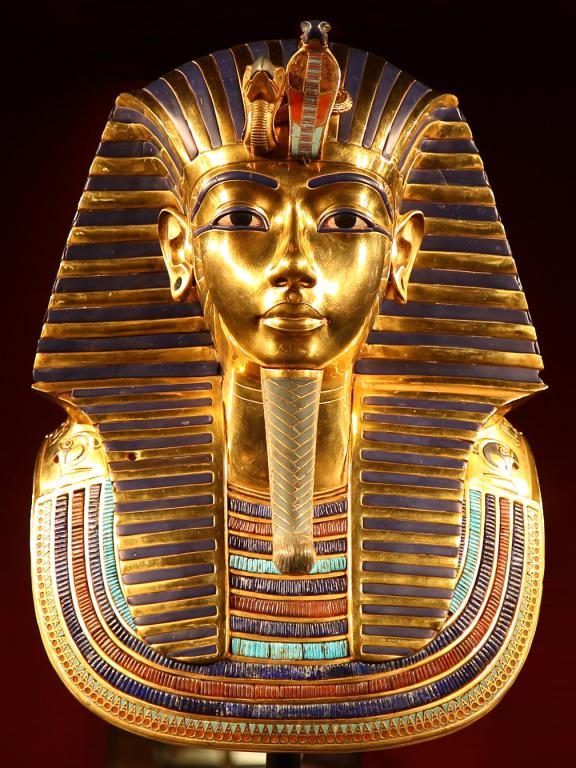
Wikimedia Commons public domain image
At one point, the exhibit signage spoke about the ancient Egyptian belief that the “skin” of the gods was gold, because of its brilliance and because it doesn’t tarnish. At another point, referring to Pharaoh Sheshonq II or Shoshenq II, the signage described the gold toe and finger coverings and other gold items with which he was buried.
With that in mind, I found myself wondering about all the gold associated with pharaonic burials. I was specifically thinking of the gold face masks of the royal mummies. These are most famously but not solely illustrated by Tutankhamen’s famous mask, which was still housed in the Egyptian Museum on Tahrir Square in Cairo when we were last there in January but which may possibly have been transferred to the new Grand Egyptian Museum in Giza over the past few weeks. Sheshonq II himself had such a funerary mask. (See the image above.)
Were the ancient Egyptian artists trying to represent the radiance that they thought characterized immortal divine beings such as the gods (and the deified pharaohs who were now numbered among the gods)? And where would they have gotten this idea of divine radiance?
Those who have encountered such divine beings often refer to the light that accompanied them. One of the children who saw seemingly angelic figures during the famous 1986 “Cokeville Miracle” in western Wyoming described them as having “light bulbs inside them.” (Analogous comments are not uncommon in accounts of near-death experiences.) Moses, who lacked any experience with electric lighting, met the Lord at Mt. Sinai amid what he underst0od as flame:
And the angel of the LORD appeared unto him in a flame of fire out of the midst of a bush: and he looked, and, behold, the bush burned with fire, and the bush was not consumed. (Exodus 3:2)
The Book of Mormon records the prophetic call of Lehi in part as follows:
And it came to pass as he prayed unto the Lord, there came a pillar of fire and dwelt upon a rock before him; and he saw and heard much; and because of the things which he saw and heard he did quake and tremble exceedingly. (1 Nephi 1:6)
In one of Joseph Smith’s accounts of his 1820 First Vision, he indicates that when he saw the column of light descending in which, shortly, he would see the Father and the Son, he was momentarily afraid that, when it touched the trees, they would burst into flame. (He, too, lived in “a world lit only by fire.”). Consider, too, this passage from the canonical account of that vision:
I saw a pillar of light exactly over my head, above the brightness of the sun, which descended gradually until it fell upon me.
It no sooner appeared than I found myself delivered from the enemy which held me bound. When the light rested upon me I saw two Personages, whose brightness and glory defy all description, standing above me in the air. (Joseph Smith – History 1:16c-17a)
And this passage, recounting the first visit to Joseph Smith of the Angel Moroni:
I discovered a light appearing in my room, which continued to increase until the room was lighter than at noonday, when immediately a personage appeared at my bedside, standing in the air, for his feet did not touch the floor.
He had on a loose robe of most exquisite whiteness. It was a whiteness beyond anything earthly I had ever seen; nor do I believe that any earthly thing could be made to appear so exceedingly white and brilliant. . . .
Not only was his robe exceedingly white, but his whole person was glorious beyond description, and his countenance truly like lightning. The room was exceedingly light, but not so very bright as immediately around his person. When I first looked upon him, I was afraid; but the fear soon left me. (Joseph Smith – History 1:30-32)
Were the ancient Egyptians, perhaps guided by accounts of actual visitations and/or memories of near-death experiences, attempting with their gold to capture something of the radiant glory of celestial beings? (The much later Byzantines seem, to me anyway, to have been trying something along the same lines with their golden mosaics.)
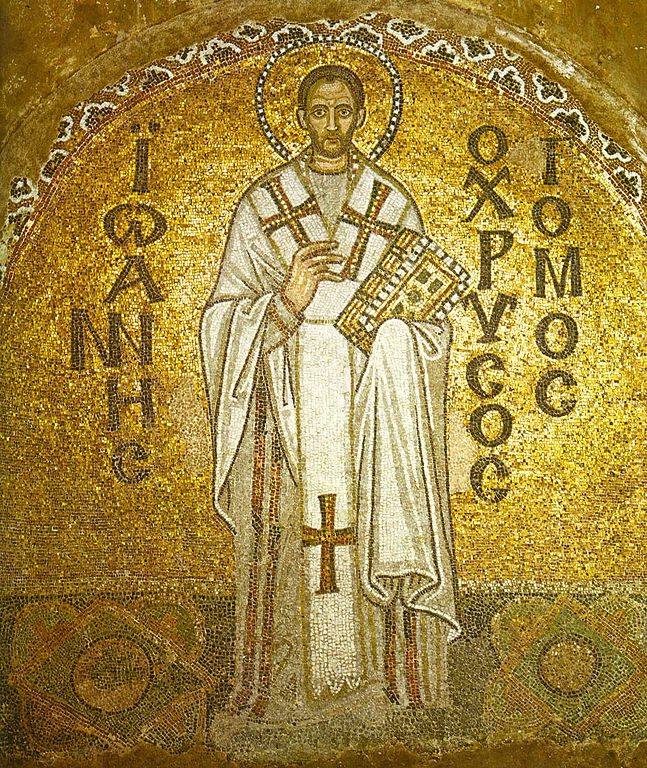
(Wikimedia Commons public domain image)
On a very different note: The Christopher Hitchens Memorial “How Religion Poisons Everything” File™ continues to chronicle the many irritating ways, big and small, in which theism and theists ruin our lives. Here’s one:
Posted from Sydney, New South Wales, Australia


